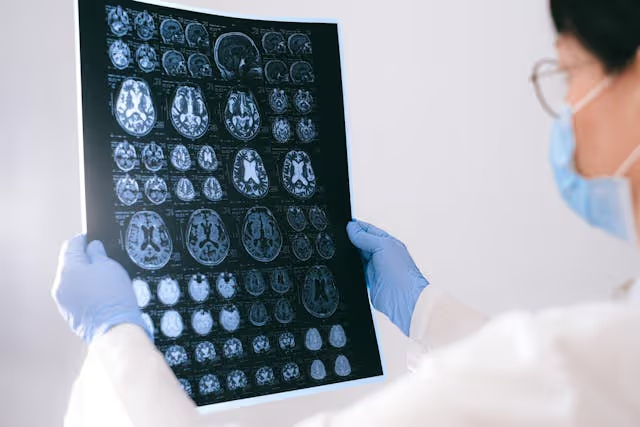Rehabilitation Facility Statistics
March 5, 2025
Insights into the Performance and Dynamics of Rehabilitation Facilities


Exploring Rehabilitation Facilities: A Detailed Look into Performance, Services, and Outcomes
Rehabilitation facilities are essential components of the healthcare continuum, offering specialized services to individuals recovering from severe injuries, surgeries, or chronic conditions. These facilities, such as Inpatient Rehabilitation Facilities (IRF), provide intensive therapy and medical oversight aimed at restoring function and promoting recovery. With the growing demand for rehabilitation services, understanding the operational, financial, and performance-based aspects of these facilities has become imperative. This article delves into various facets of rehabilitation facilities, presenting statistical data, quality measures, and insights into treatment efficacy, all within the broader context of healthcare services in the United States.
Understanding Rehabilitation Facilities

What is a rehabilitation facility?
A rehabilitation facility, often referred to as an inpatient rehabilitation facility (IRF), is a specialized hospital designed specifically for patients recovering from serious injuries, illnesses, surgeries, and chronic medical conditions. These facilities offer hospital-level medical services, which include 24-hour nursing care and daily physician management. They cater to patients with complex therapy needs, providing a high level of intensive rehabilitation.
Difference between IRFs and other care settings
IRFs differ significantly from other care settings, such as skilled nursing facilities (SNFs) and long-term acute care hospitals. Inpatient rehabilitation facilities typically require patients to participate in at least three hours of therapy services daily, five days a week. This level of intensity is not generally available in SNFs, which tend to focus more on custodial care rather than active rehabilitation. Additionally, IRFs employ interdisciplinary teams that develop personalized treatment plans tailored to the individual needs of patients.
General services provided
The general services provided in rehabilitation facilities include:
- Skilled Nursing Care: Continuous monitoring and assistance from registered nurses and licensed practical nurses.
- Therapeutic Services: Physical therapy, occupational therapy, and speech-language therapy, all aimed at improving functional abilities.
- Customized Treatment Plans: Comprehensive rehabilitation plans designed to meet the specific recovery goals and challenges of each patient.
- Patient and Family Engagement: Involvement of family members in treatment discussions and rehabilitation goals to ensure a supportive recovery environment.
Overview of IRF Capacity and Utilization
In 2019, IRFs played a significant role in the Medicare landscape, with approximately 363,000 beneficiaries undergoing 409,000 IRF stays, showing a solid demand for these specialized rehabilitation services. The average occupancy rate of 67% in IRFs indicated sufficient capacity to meet this demand. As healthcare continues to evolve, IRFs remain critical for delivering targeted and effective rehabilitation services.
Quality Indicators and Measures for Inpatient Rehabilitation Facilities

What are the quality indicators and scoring measures used for inpatient rehabilitation facilities?
The quality indicators and scoring measures for inpatient rehabilitation facilities (IRFs) are detailed in the IRF Quality Reporting Program (QRP). Important metrics tracked include:
- Percent of Residents Experiencing One or More Falls with Major Injury
- Discharge Self-Care Score
- Discharge Mobility Score
These indicators are derived from the Inpatient Rehabilitation Facility Patient Assessment Instrument (IRF-PAI) and are publicly disclosed by the Centers for Medicare & Medicaid Services (CMS).
What is the purpose of quality indicators?
Quality indicators are designed to assess the performance of rehabilitation facilities in delivering effective patient care. They focus on various aspects of rehabilitation outcomes, thereby ensuring facilities maintain a high standard. By evaluating these metrics, IRFs can identify areas for improvement, optimize patient care, and enhance service delivery.
How does compliance impact facilities?
Compliance with these reporting measures is mandated by federal laws, including the Patient Protection and Affordable Care Act and the IMPACT Act. Failing to report quality indicators not only risks financial penalties but also affects a facility’s reputation and funding eligibility. In 2024, new measures will include the 'Discharge Function Score' and data on patients’ COVID-19 vaccination status. Thus, adherence is crucial for both operational sustainability and improving patient outcomes.
Trends in Rehabilitation Facility Numbers

How many inpatient rehabilitation facilities are there in the US and how have these numbers changed over recent years?
As of 2019, the United States reported 15,961 inpatient rehabilitation facilities (IRFs). This marks a slight decline from 14,809 facilities in 2018 but an increase from 13,585 in 2017. Over the years, the numbers have fluctuated, with 14,399 facilities recorded in 2016. The variations in IRF numbers highlight the evolving landscape of rehabilitation services.
In contrast to the trends seen in inpatient rehabilitation facilities, the total count of substance abuse treatment facilities demonstrates significant growth. A sharp increase can be observed, with the number of such facilities rising from 13,623 in 2003 to 17,561 in 2023. This expansion underscores a growing recognition of the need for substance abuse services across the country.
Overview of Rehabilitation Facilities and Changes
| Year | IRFs Count | Substance Abuse Facilities Count |
|---|---|---|
| 2016 | 14,399 | 13,623 |
| 2017 | 13,585 | - |
| 2018 | 14,809 | - |
| 2019 | 15,961 | - |
| 2023 | - | 17,561 |
These trends indicate that while the numbers of inpatient rehabilitation facilities may vary, the overall growth of treatment facilities, especially for substance abuse, signifies an adaptive response to the increasing healthcare demands in the U.S. This evolution is crucial for addressing the complexities of rehabilitation and recovery.
Evaluating the Success Rates of Addiction Treatments

What are the success rates for different types of addiction treatments in rehabilitation programs?
The success rates for various addiction treatments in rehabilitation programs differ depending on the substance being treated. Here are some notable statistics:
| Substance | Success Rate |
|---|---|
| Alcohol | 50-60% |
| Benzodiazepines | 30-40% |
| Cocaine | 40-50% |
| Heroin | 35-45% |
| Fentanyl | 25-35% |
| Methamphetamine | 20-30% |
Overall, approximately 40-60% of individuals manage to achieve sustained sobriety or show significant reductions in substance use with effective rehabilitation programs. These variations highlight the significant impact of the specific substance on treatment outcomes.
What factors affect addiction treatment outcomes?
Several factors significantly influence the success of addiction recovery:
- Individual Commitment: A patient's determination and readiness to change play critical roles in the recovery process.
- Quality of Treatment: Access to high-quality, evidence-based treatment programs can dramatically increase success rates.
- Social Support: A strong support system, whether from family, friends, or community groups, is essential for long-term recovery.
- Environmental Stability: Stable living conditions and a positive environment can reduce triggers that lead to relapse.
Given these considerations, ongoing support is paramount for maintaining gains made during rehabilitation. This holistic approach enhances the potential for recovery and helps to mitigate the risks of relapse post-treatment.
Key Financial and Operational Insights into IRFs
What financial and operational aspects should be considered when assessing inpatient rehabilitation facilities?
When evaluating inpatient rehabilitation facilities (IRFs), it's crucial to take a comprehensive look at both financial metrics and operational efficiencies. The average cost of care in IRFs can range between $850 and $2,500 per day, amounting to substantial total costs depending on the length of stay. For instance, a 30-day stay can vary anywhere from $25,500 to $75,000 depending on the services required and the specific condition treated.
Operationally, nearly 90% of average daily charges are attributed to quality services provided, which encompass room and board, medical care, and rehabilitation therapies. This indicates that understanding the dynamics of service delivery is essential for assessing the overall value of care offered in IRFs.
Insurance coverage is another pivotal aspect influencing the accessibility and affordability of inpatient rehabilitation. Patients typically navigate through various payment options, including private insurance, Medicare, and self-pay arrangements. Thus, it's important to note how charges are influenced by Diagnosis-Related Groups (DRGs) and payer types, as these can significantly impact both patient billing and institutional revenue.
This dual focus on both operational quality and financial dimensions can help stakeholders optimize their planning and resources in the context of IRF services.
Medicare Ratings and Metrics for Rehabilitation Facilities
What are Medicare ratings for rehabilitation facilities?
Medicare ratings for rehabilitation facilities are provided through the Medicare Care Compare tool. This resource enables users to search for and compare inpatient rehabilitation facilities (IRFs) based on the quality of care offered. Facilities catering to patients recovering from serious conditions, such as strokes or brain injuries, are evaluated using specific quality metrics.
The following metrics are among the most significant in assessing IRF quality:
- Rates of Pressure Ulcers: Measures the incidence of pressure sores, a critical aspect of patient care.
- Readmissions: Reflects the percentage of patients who return to a hospital shortly after discharge, indicating care effectiveness.
- Resident Injuries: Tracks occurrences of injuries within the facility, impacting overall safety.
- Discharge Functional Scores: Assesses patient improvement and readiness for discharge post-rehabilitation.
- Infection Control Measures: Evaluates how well facilities maintain hygiene and prevent infections.
To enhance transparency and improve patient care decision-making, the Inpatient Rehabilitation Facility Quality Reporting Program mandates that facilities report standardized data. As of December 2024, publicly reported IRF data includes detailed patient outcomes as well as additional metrics related to infection, providing a comprehensive view of care quality.
Patient outcomes and performance measures
Patient outcomes and performance measures are integral to evaluating the effectiveness of rehabilitation facilities. For instance, data collected from the Inpatient Rehabilitation Facility-Patient Assessment Instrument (IRF-PAI) offers insight into functional status at admission and discharge, as well as the types and amounts of rehabilitation services provided.
Metrics such as Functional Independence Measure (FIM) scores and rehabilitation lengths of stay are closely monitored. Recent studies revealed that patients experienced an average FIM gain of 26 points, indicating substantial functional improvement. Additionally, a noteworthy 94% of patients in 2023 were discharged to their homes, surpassing the targeted threshold of over 90%.
Through these ratings and assessments, Medicare aims to ensure that rehabilitation facilities maintain high standards of care, ultimately leading to improved patient outcomes and a more effective rehabilitation process.
Effectiveness of Treatments at Trauma Rehabilitation Facilities
What statistics and measures are available regarding the effectiveness of treatments at trauma rehabilitation facilities?
Statistics and measures regarding treatment effectiveness for traumatic brain injuries (TBIs) emphasize both recovery rates and advancements in clinical practices. Research conducted over the years has indicated that approximately 85-90% of individuals with mild TBIs can achieve recovery within three months. However, recovery trajectories for moderate to severe TBIs can vary widely, often extending over five years.
Recent advancements have led to the clinical validation of biomarkers such as GFAP and UCH-L1. These biomarkers help predict cognitive outcomes, thereby enhancing treatment precision for patients based on their unique injury profiles.
How effective are rehabilitation practices in improving patient outcomes?
Rehabilitation practices at trauma facilities have demonstrated significant efficacy in promoting functional recovery among patients. Evidence suggests that both cognitive and physical rehabilitation techniques play crucial roles in improving overall patient outcomes. In outpatient settings, for example, nearly 87% of rehabilitation patients did not require hospitalization after returning home, exceeding established goals.
Additionally, the mean gain on the Functional Independence Measure (FIM) reflects notable improvements in patient functionality after rehabilitation. The documented average length of stay for rehabilitation has also decreased, indicating a shift towards more efficient therapy protocols. These statistics underscore the imperative of continuous outcome measurements to evaluate treatment efficacy and refine rehabilitation protocols as medical knowledge evolves.
| Metric | Mild TBI Recovery Rate | Moderate to Severe TBI Recovery | Length of Stay Reduction |
|---|---|---|---|
| Percentage Recovery (3 months) | 85-90% | Varies (up to 5 years) | From 19 to 14.5 days |
| No hospitalization after home return | - | 87% | - |
| Average FIM Gain | Clinical Improvement | - | - |
These insights highlight the critical need for targeted rehabilitation approaches and carry the promise of improved outcomes for patients dealing with the impacts of TBIs.
The Economics of Rehabilitation Treatments
Cost and duration of different treatment methods
Understanding the financial landscape of rehabilitation treatments provides insight into patient access and care. In 2021, Medicare alone allocated approximately $8.7 billion for inpatient rehabilitation facility (IRF) stays across the country, reflecting the crucial role these facilities play in the healthcare system. Each stay averages around 18 days, which can vary depending on the patient's condition and treatment plan.
In terms of specific rehabilitation costs, various treatment modalities have average expenses that can diverge widely. For instance:
| Treatment Type | Average Cost Per Person | Duration |
|---|---|---|
| Inpatient Rehabilitation Facilities | Varies (typically higher | Average length of stay 18 days |
| Outpatient Treatment | $8,386 | Varies by patient needs |
| Drug Rehabilitation | $13,475 | Varies (often similar to inpatient settings) |
Impact of financial factors on access to care
Financial factors significantly influence access to rehabilitation services. The recommended 5% reduction in Medicare base payment rates for IRFs indicates ongoing efforts to align payments with rising care costs. Furthermore, audits revealed high error rates in IRF claims, highlighting compliance and regulatory challenges that can affect access for patients.
With around 68,150 providers distributing services nationwide, challenges persist, especially as the aging population intensifies demand for rehabilitation versus the availability of services. Such dynamics illustrate the intricate relationship between the economics of rehabilitation treatment and its accessibility for patients in need.
Demographic and Outcome Data in Rehabilitation Facilities
Patient demographics and outcomes
Inpatient rehabilitation facilities (IRFs) cater to a diverse patient population, predominantly consisting of older individuals. In a recent analysis, the mean age of patients increased from 54.1 years to 64.8 years, highlighting the trend of care for more elderly patients, particularly those requiring rehabilitation after traumatic brain injuries (TBIs).
The population at these facilities is mostly Medicare beneficiaries, with the percentage climbing from 40.7% to 62.1% over certain years. This significant increase reflects changing insurance demographics and a rising need for rehabilitation services. Out of 233,843 patients analyzed, a staggering 71.9% were discharged back home, demonstrating successful rehabilitation outcomes.
Trends in functional improvements
The effectiveness of rehabilitation is further illustrated by the Functional Independence Measure (FIM) scores. Studies show that the mean FIM gain is crucial for assessing patient progress. For instance, patients demonstrated a mean rehabilitation length of stay of about 12.6 days, revealing how IRFs strive to balance efficiency with effective care delivery. Moreover, in 2023, improvements in WeeFIM scores post-discharge exceeded the expected goals by achieving a notable 27% increase.
This data provides insights into both the demographics of patients utilizing IRFs and the tangible outcomes achieved through rehabilitation efforts. Collectively, these trends underscore the evolving landscape of rehabilitation care, heavily influenced by an aging population and increasing service demands.
The Role and Impact of Physical Therapy Rehabilitation Centers

Revenue growth and market scale
The Physical Therapy Rehabilitation Centers industry in the U.S. is projected to generate approximately $49.9 billion in revenue by 2024. This remarkable figure underscores the sector's significant market scale and relevance in the healthcare landscape. Over the last five years, the industry has experienced a compound annual growth rate (CAGR) of 1.3%, indicating steady growth despite the challenges posed by evolving healthcare policies and economic conditions.
Currently, there are 53,709 businesses operating within this industry, reflecting an increase in the number of establishments compared to previous years. This growth contributes to the employment of approximately 748,000 individuals, generating a robust workforce that supports patient-centered care.
Influence of aging population on demand
A major trend shaping the demand for physical therapy services is the aging population. As individuals aged 65 and older experience a higher prevalence of injuries and chronic conditions, the demand for rehabilitation services continues to rise. The increase in Medicare patients utilizing inpatient rehabilitation facilities (IRFs), now 62.1%, further highlights the impact of this demographic shift.
The combination of a growing elderly population and expanding service offerings in rehabilitation centers positions the industry to address the changing healthcare needs effectively. This makes the sector integral not only for recovery but also for enhancing the overall quality of life for individuals in need of rehabilitation services.
| Year | Revenue (in billions) | Number of Businesses |
|---|---|---|
| 2024 | 49.9 | 53,709 |
| 2023 | N/A | N/A |
| 2022 | N/A | N/A |
| 2021 | N/A | N/A |
This table highlights the projected revenue growth and the increasing number of businesses within the industry.
Compliance, Challenges, and Regulatory Issues in IRFs
Audit Findings and Compliance Issues
In recent assessments, the Centers for Medicare & Medicaid Services (CMS) reported high error rates in claims submitted by inpatient rehabilitation facilities (IRFs). For instance, in a comprehensive audit of 220 sampled IRF stays, documentation for 175 stays—around 79.5%—lacked support to confirm the care was reasonable and necessary. This highlights significant compliance hurdles that facilities must navigate to ensure they meet regulatory standards.
Impact on Financial and Operational Metrics
These compliance concerns have direct implications on financial dynamics and operational metrics within IRFs. The aggregate Medicare margin for IRFs was notably favorable at 14.3% in 2019, indicating payments exceeded care costs. However, continuous high error rates in claims processing may lead to decreased revenues, as facilities face potential recoupments and scrutiny from Medicare.
As regulatory challenges mount, some recommendations suggest adjusting Medicare base payment rates—for instance, a proposed 5% reduction in 2022. This shift aims to create a balance between payment structures and the actual costs of care, which might reshape financial scenarios for IRFs moving forward.
Maintaining compliance while managing patient care effectively remains a priority for IRFs, as the landscape continues to evolve.
Concluding Thoughts on Rehabilitation Facilities
The diverse landscape of rehabilitation facilities plays a pivotal role in the healthcare system, addressing a wide array of conditions and patient needs. From addressing operational challenges and compliance issues to enhancing the quality of care through standardized measures, the rehabilitation sector is in constant evolution to better serve its patients. As healthcare demands grow, especially within aging populations, the need for precise and effective rehabilitation services becomes ever more critical. By understanding and addressing the financial, operational, and treatment efficacy aspects of these facilities, stakeholders can ensure that rehabilitation continues to be a cornerstone of comprehensive care in the healthcare journey.
References
- [PDF] Inpatient rehabilitation facility services - MedPAC
- [PDF] National Health Statistics Reports, Number 208, August 7, 2024 - CDC
- Dataset: Inpatient Rehabilitation Facility Compare (IRF Compare)
- Acute Inpatient Rehabilitation Improves Function Independent of ...
- Inpatient Statistics and Outcomes in Rehabilitation Medicine
- Physical Therapy Rehabilitation Centers in the US - IBISWorld
- Inpatient Rehabilitation Facility Nationwide Audit



























































.jpeg)










































































































































































































.avif)























































.jpeg)

































































.jpeg)














.jpg)









































.jpeg)









































































.avif)




.avif)

















































.avif)







































































































































































